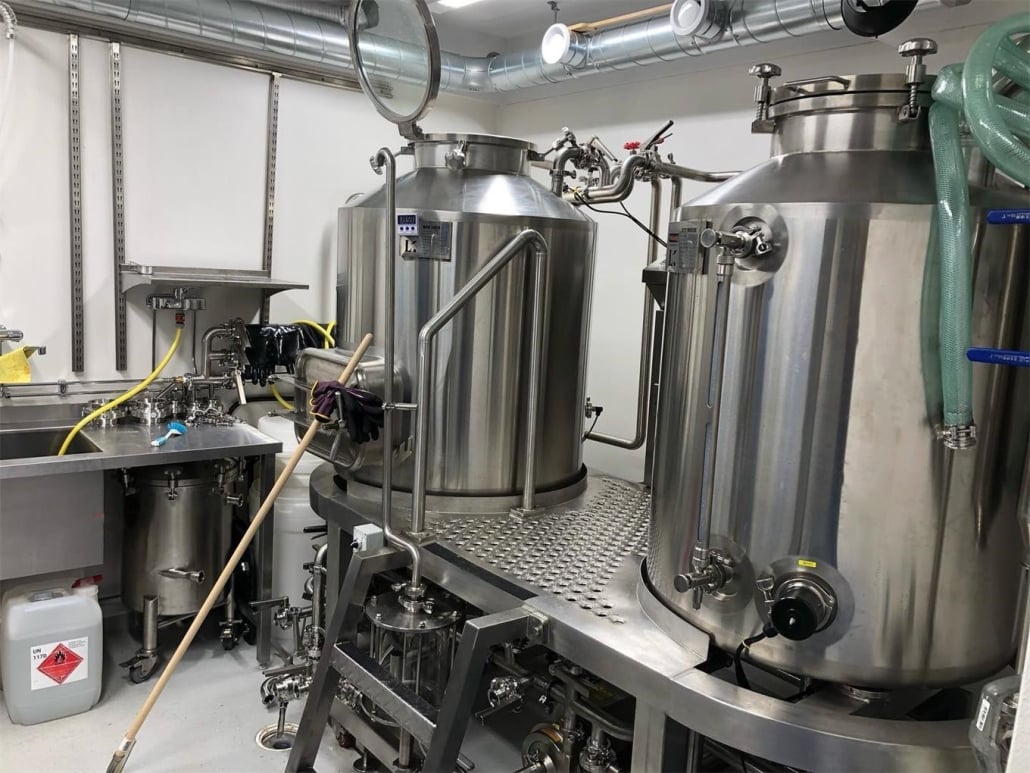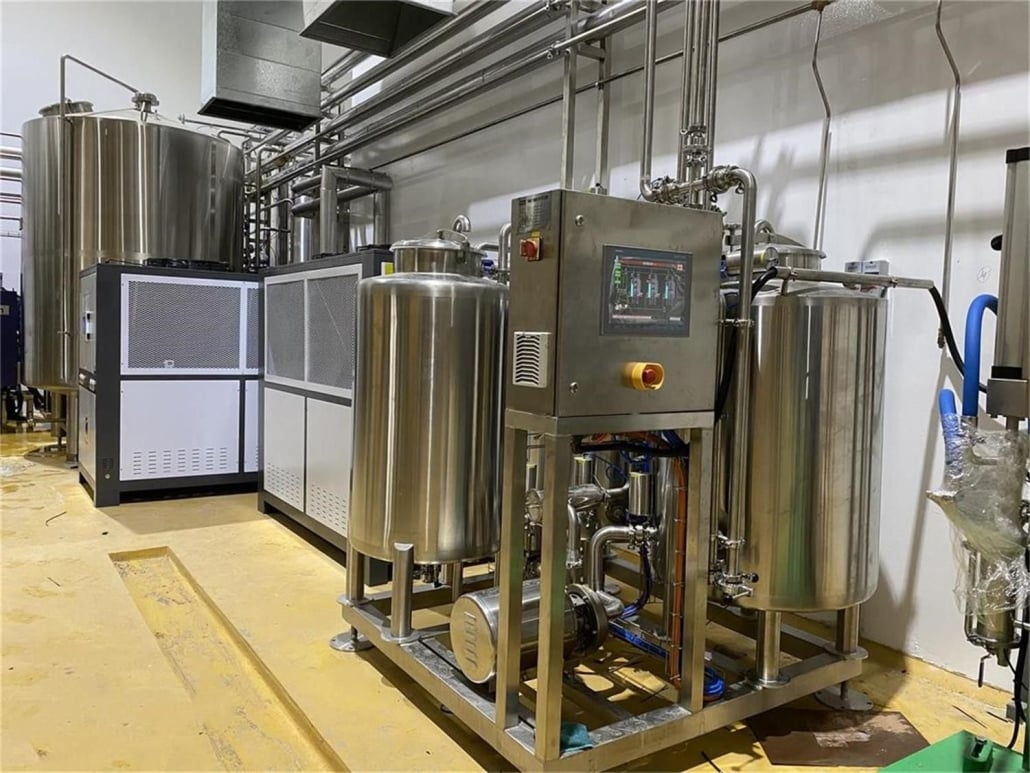Nano Brewery Setup
Are you ready to dive into the exciting world of nano brewing? The journey of setting up a nano brewery can be both thrilling and challenging. Whether you’re a homebrewer looking to expand or an entrepreneur passionate about craft beer, this guide is tailored to help you navigate the complexities of a nano brewery setup. We’ll cover everything from essential equipment and brewing processes to detailed comparisons and pricing. Let’s get started!
Overview of Nano Brewery Setup
A nano brewery is a small-scale craft brewery that typically produces beer in batches ranging from 1 to 3 barrels. These setups are perfect for passionate brewers who want to turn their hobby into a business without the extensive financial and spatial requirements of a larger brewery.
Nano breweries offer several advantages:
- Lower Startup Costs: Compared to microbreweries and larger setups, nano breweries require less capital investment.
- Flexibility and Creativity: Small batch sizes allow for greater experimentation with different beer styles and recipes.
- Community Engagement: Nano breweries often have a strong local focus, creating a loyal customer base.

Essential Equipment Guide
Setting up a nano brewery requires a range of specialized equipment. Here’s an overview of the key components you’ll need:
Brewhouse Equipment
- Mash Tun: Where the mashing process converts starches to sugars.
- Brew Kettle: Used for boiling the wort.
- Hot Liquor Tank: Provides hot water for the brewing process.
- Fermenters: Vessels where wort is fermented into beer.
- Brite Tanks: Used for carbonating and conditioning the beer.
Additional Equipment
- Grain Mill: For crushing the malted barley.
- Heat Exchanger: Cools the wort before fermentation.
- Pumps and Hoses: For transferring liquids between vessels.
- Kegging and Bottling Systems: For packaging the finished product.
Equipment Types Table
| Equipment Type | Function | Material | Typical Cost Range |
|---|---|---|---|
| Mash Tun | Converts starches to sugars | Stainless Steel | $1,000 – $5,000 |
| Brew Kettle | Boils the wort | Stainless Steel | $1,500 – $7,000 |
| Hot Liquor Tank | Provides hot water for mashing and sparging | Stainless Steel | $1,000 – $4,000 |
| Fermenters | Ferments wort into beer | Stainless Steel | $2,000 – $8,000 |
| Brite Tanks | Carbonates and conditions beer | Stainless Steel | $2,500 – $10,000 |
| Grain Mill | Crushes malted barley | Steel | $500 – $2,000 |
| Heat Exchanger | Cools wort quickly | Stainless Steel | $800 – $3,000 |
| Pumps and Hoses | Transfers liquids | Various | $300 – $1,500 |
| Kegging/Bottling Systems | Packages beer for distribution | Various | $1,000 – $6,000 |
Brewing Process Explained
The brewing process in a nano brewery is similar to that in larger breweries but on a smaller scale. Here’s a step-by-step overview:
Brewing Process Steps
- Milling the Grain: The malted barley is crushed to break the grain hulls and expose the starches inside.
- Mashing: The milled grain is mixed with hot water in the mash tun to convert starches to fermentable sugars.
- Lautering: The mash is separated into clear liquid wort and spent grains.
- Boiling: The wort is boiled, and hops are added for bitterness, flavor, and aroma.
- Cooling: The hot wort is rapidly cooled using a heat exchanger.
- Fermentation: The cooled wort is transferred to a fermenter, and yeast is added to begin fermentation.
- Conditioning: The beer is conditioned in brite tanks to develop flavors and carbonation.
- Packaging: The finished beer is kegged or bottled for distribution.
Brewing Capacity, Space, and Layout Table
| Aspect | Details |
|---|---|
| Brewing Capacity | Typically 1-3 barrels per batch |
| Space Requirements | Minimum 500 sq ft for basic setup; more space needed for storage and expansion |
| Layout Considerations | Efficient workflow, proper spacing for equipment, easy access for cleaning and maintenance |
| Customization Options | Equipment size, automation level, additional features like temperature control |
Suppliers and Pricing
Finding reliable suppliers is crucial for sourcing quality equipment at competitive prices. Here are some well-known suppliers and their price ranges:
| Supplier | Specialty | Price Range |
|---|---|---|
| Ss Brewtech | Stainless steel equipment | $1,000 – $20,000 |
| Blichmann Engineering | Innovative brewing solutions | $1,500 – $15,000 |
| MoreBeer! | Homebrewing and nano setups | $500 – $10,000 |
| Spike Brewing | Customizable brewing systems | $2,000 – $18,000 |
Installation, Operation, and Maintenance
Installation
Setting up a nano brewery involves several steps:
- Site Preparation: Ensure the location has adequate plumbing, electrical, and ventilation systems.
- Equipment Installation: Proper placement and connection of all brewing equipment.
- Testing: Run initial tests to check for leaks, proper operation, and efficiency.
Operation
Operating a nano brewery includes:
- Recipe Development: Creating and testing beer recipes.
- Production Scheduling: Planning brew days and fermentation schedules.
- Quality Control: Regular testing of beer quality and consistency.
Maintenance
Regular maintenance ensures the longevity and efficiency of your equipment:
- Cleaning: Thorough cleaning of all brewing vessels and lines after each batch.
- Routine Inspections: Regular checks for wear and tear, leaks, and other issues.
- Repairs: Prompt repair or replacement of faulty components.
| Aspect | Details |
|---|---|
| Installation | Site preparation, equipment setup, initial testing |
| Operation | Recipe development, production scheduling, quality control |
| Maintenance | Cleaning after each batch, routine inspections, timely repairs |
Choosing the Right Supplier
Selecting the right supplier is crucial for the success of your nano brewery. Here are some tips:
Considerations for Choosing Suppliers
- Reputation: Look for suppliers with positive reviews and a solid track record.
- Quality of Equipment: Ensure the equipment meets industry standards and is built to last.
- Customer Support: Good after-sales support can save you a lot of headaches.
- Price: Compare prices, but don’t compromise on quality.
Supplier Comparison Table
| Supplier | Reputation | Equipment Quality | Customer Support | Price |
|---|---|---|---|---|
| Ss Brewtech | Excellent | High | Responsive | Medium-High |
| Blichmann Engineering | Very Good | High | Good | Medium |
| MoreBeer! | Good | Medium-High | Responsive | Medium |
| Spike Brewing | Excellent | High | Excellent | High |
Pros and Cons of Nano Brewery Setup
Starting a nano brewery comes with its own set of advantages and limitations. Here’s a detailed look:
Advantages
- Lower Initial Investment: Compared to larger breweries, nano breweries require less capital.
- Flexibility: Easier to experiment with new recipes and styles.
- Community Focus: Ability to build a loyal local customer base.
- Scalability: Can gradually scale up production as demand increases.
Limitations
- Limited Production Capacity: Small batch sizes may not meet high demand.
- Higher Per-Unit Costs: Economies of scale are not as favorable.
- Regulatory Challenges: Navigating local and federal regulations can be complex.
- Space Constraints: Limited space for equipment and storage.
Pros and Cons Table
| Aspect | Advantages | Limitations |
|---|---|---|
| Initial Investment | Lower costs | Limited by available capital |
| Production Flexibility | Easy to experiment | Small batches may not meet high demand |
| Community Engagement | Strong local focus | Market reach limited to local area |
| Scalability | Can grow gradually | Scaling up requires additional investment |
| Per-Unit Costs | NA | Higher due to smaller batch sizes |
| Regulatory Navigation | NA | Complex regulations can be challenging to comply with |
| Space | NA | Limited space for equipment and storage |

FAQ
| Question | Answer |
|---|---|
| What is a nano brewery? | A small-scale brewery that typically produces 1-3 barrels per batch. |
| How much does it cost to start a nano brewery? | Costs vary, but initial setup can range from $10,000 to $100,000. |
| What equipment do I need for a nano brewery? | Mash tun, brew kettle, hot liquor tank, fermenters, brite tanks, etc. |
| How much space is required for a nano brewery? | A minimum of 500 sq ft is recommended. |
| How long does it take to brew beer in a nano brewery? | The brewing process takes 4-6 weeks from start to finish. |
| What are the key benefits of a nano brewery? | Lower startup costs, flexibility, strong local focus, and scalability. |
| What are the main challenges of running a nano brewery? | Limited production capacity, higher per-unit costs, regulatory hurdles. |
| Can a nano brewery be profitable? | Yes, with good management, quality products, and strong local engagement. |
Share this entry
Interested in learning more about Brewing Systems including additional details and pricing information? Please use the form below to contact us!
YOLONG BREWERY EQUIPMENT FAQS
- Commercial Brewery / Craft Brewery / Microbrewery / Nanobrewery
- What is The Difference Between Craft Beer and Industrial Beer?
- The Bespoke Differences In Custom Brewing Systems
- Everything You Need to Know About Kettle Souring
- How to Choose Brewing Equipment for Your business?
- How To Choose The-Best Partner To Build Your Commercial Microbrewing System?
- Two Detection Sensors That You Need To Use In Your Brewhouse System
- Remote Control Applications in Brewing Equipment/How does it work?
- How To Clean Your Brand New Brewery Tanks?

